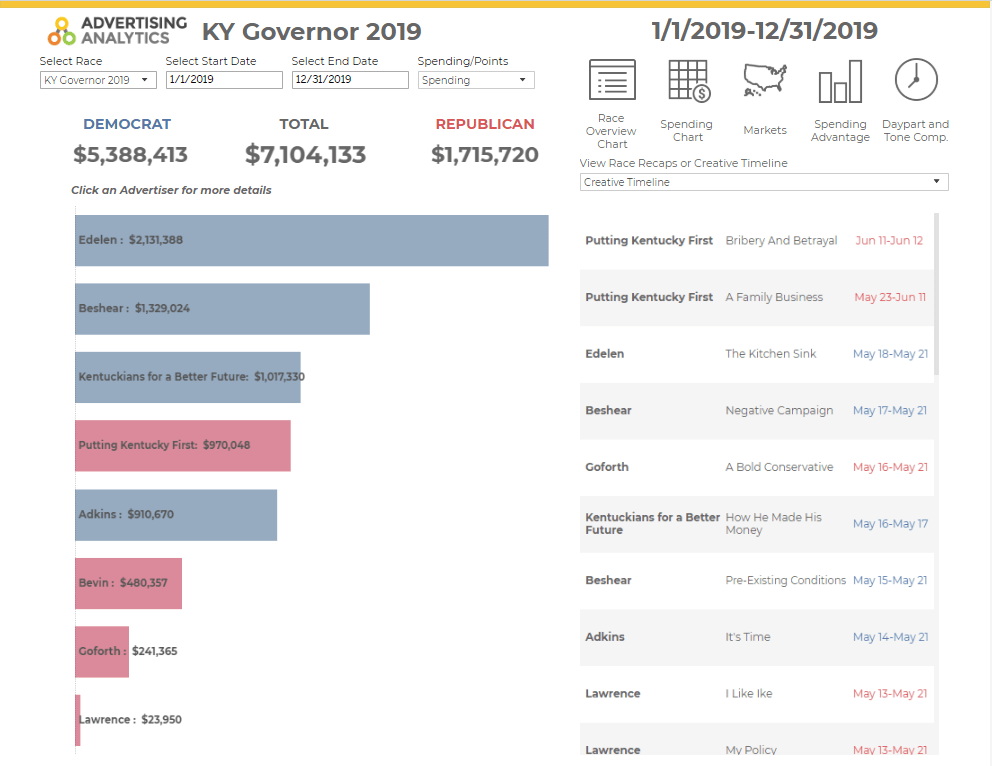June 18, 2019
Two of the nation’s largest swing states, Florida and Pennsylvania, were decided by extremely slim margins in 2016, and will both undoubtedly be of equal or greater importance in 2020. Both states are vital to President Trump’s reelection effort; losing either one would make it extremely difficult to find a path to victory. We’ve examined the factors that led to Trump’s 2016 win in both states, and identified the circumstances he will need to replicate for a repeat victory in 2020.
Electoral Analytics
Pennsylvania is a diverse state that is home to 20 Electoral College votes. While often described as “Philadelphia and Pittsburgh, with Kentucky in the middle,” the dynamics of the state are a little more nuanced. Pennsylvania is a microcosm of America’s changing political landscape. The rich suburbs outside of Philadelphia and Pittsburgh are ancestrally Republican, but lean increasingly Democratic. In contrast, rural areas throughout the rest of the state, often with deep Democratic and unionist roots, are rapidly leaving the party.
Trump won Pennsylvania by only 44,000 votes and lost many of the larger, urban counties in the state by wider margins than Romney did. But he made up for these losses by capturing the state’s 20 smallest counties, outperforming Romney in these areas by more than 10%. Trump also trounced Romney’s margins in Scranton-Wilkes Barre, winning by 161,000 votes to Romney’s 23,000. He then further outperformed Romney by 10% in Lackawanna and Luzerne, the two biggest counties in the state. Trump’s strong performance in these mid-sized counties is often overlooked, but crucial to understanding his surprise win in 2016.

With frequent visits to Mar-a-Lago, Florida has practically become President Trump’s adopted home state. His proclivity for visiting Florida has given him a major boost in the nation’s largest swing state. In 2016, Trump won Florida by 1.2%, a margin that is basically a landslide for a state notorious for close elections and recounts. He outperformed Romney in nearly every market except Miami and Gainesville. Two of his strongest showings were in Orlando and Tampa, areas critical to taking the state. Generally the trend was that Hillary performed extremely well in the nation’s largest counties while struggling in smaller ones. Trump bucked this trend in Florida. In Hillsborough County, the largest in the Tampa market, Trump kept Hillary from expanding her margins. Furthermore, he expanded Romney’s margins by an average of 5% in the rest of the counties in the Tampa market. Trump repeated this same performance in Orlando and made major gains in the panhandle to win the state.

Florida is an ideal setting for President Trump. His well-documented strength in rural areas led to his victory in 2016, and his ability to keep Hillary from running up the score in larger urban areas like Orange and Hillsborough Counties carried him to a larger margin of victory than both statewide Republicans running in 2018.
Florida and Pennsylvania will again be crucial to President Trump’s reelection hopes in 2020. It seems likely that he will need to win both to return to the White House. Each has strong similarities to the other: large, liberal cities like Miami and Philadelphia that vote overwhelmingly Democratic, and small counties where Trump dominates and reduces the Democratic margin of victory. If the rural counties serve as a firm base which will vote for Trump no matter what, this leaves the mid-size counties in large markets as the key to his reelection. If Trump can repeat his margin in these types of counties he will likely win, if not, he will face a very steep uphill climb.






